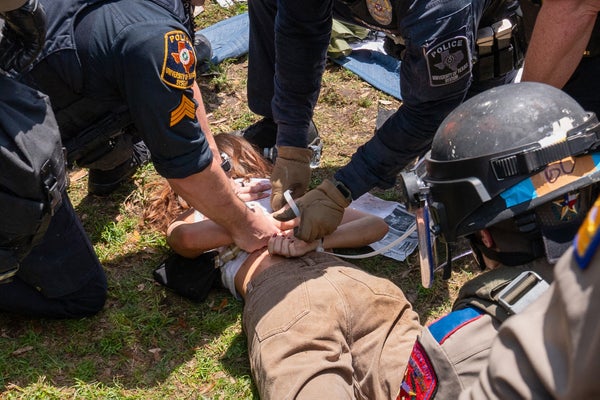Here’s What Universities Always Get Wrong about Student Protests
Repression draws attention to campus protests and makes them grow
State troopers and university police arrest a protestor at the University of Texas in Austin on April 29, 2024.
Suzanne Cordeiro/AFP via Getty Images
As protests of the war in Gaza have erupted on university campuses over the past few weeks, we see once again the idealism, dedication and energy that young people bring to the causes they care about. Although there is nothing new about student activism, every time it appears on campuses with a fresh generation, it brings an exhilarating vibrancy. In the 1950s students protested against the rising tide of McCarthyism and its threats to free expression. In the 1960s students brought civil rights, the women’s movement, and the anti–Vietnam War movement to campuses. The 1980s witnessed a wave of anti-apartheid protests, including the spread of “shantytowns” as a tactic, and in the 1990s students protested their universities’ affiliations with clothing retailers, like Nike, that employed sweatshop labor in their supply chains. More recently, campuses have been awash with activism related to fighting climate change and supporting Black Lives Matter.
It makes sense that campuses seethe with protest. Universities and colleges give students a “liberal” education focused on critical thinking, broadening their perspectives and emphasizing the importance of ideas in our lives. And as research on activism has demonstrated, young people simply have more time, energy and flexibility to dedicate to activism, especially when compared to their slightly older, full-time employed peers. Campuses are designed for the discussion of ideas and include places, like open plazas, where students can gather for extracurricular activities. And for protest. Campuses are laboratories for innovative thinking and experimentation with new perspectives. They ostensibly promote free expression….
Read the full article here







